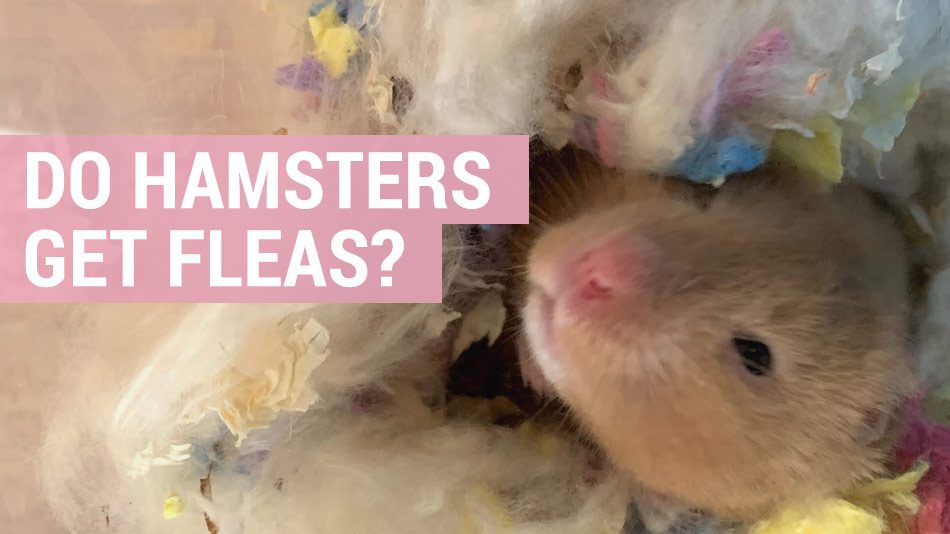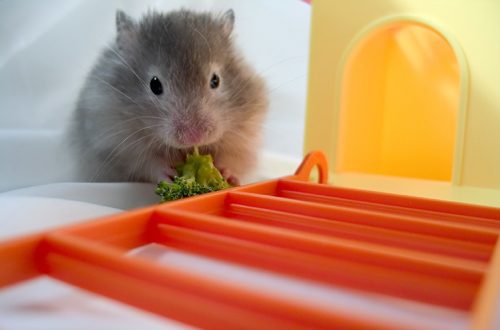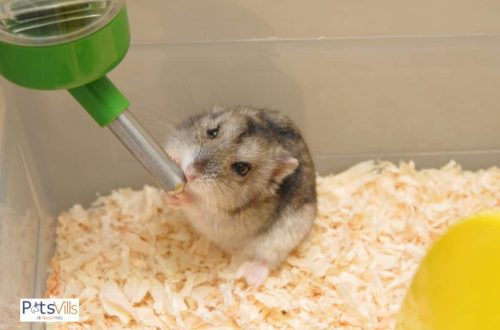
Do hamsters have fleas: how to determine and how to withdraw
If the pet suddenly began to itch, the owner willy-nilly think about whether hamsters have fleas. Especially if you previously kept at home not rodents, but dogs or cats. It is not for nothing that there are a lot of means for the prevention and treatment of afanipterosis (flea) in pets. Fleas in a hamster are rare, but the owner of a rodent will not be out of place to learn how to act in such a situation.
Contents
Types of parasites
There are many varieties of fleas: cat, dog, rabbit. But fleas of any kind are not picky, they bite all warm-blooded animals and even birds. The most common is the cat flea. These bloodsuckers on a hamster accidentally, in transit. As a constant source of food, a tiny rodent is not suitable for them, so getting rid of them will be easy. The situation is worse if the animal is attacked by mouse or rat fleas.
Sources of infection
Consider where fleas can come from:
Other rodents
It is hard to imagine that a hamster is kept in a house where rats and mice roam freely. However, in a pet store or in the market, a hamster can just pick up parasites from neighbors: rabbits, rats, guinea pigs.
Домашние животные
Cat, dog, ferret – any pet can become a source of infection. Animals that walk on the street catch parasites more often. But fleas also settle on a cat that did not leave the apartment, and multiply beyond measure, attacking everyone, including the hamster.
Footwear
Flea eggs enter the apartment on shoes and under favorable conditions (rare cleaning, wooden floor with cracks) grow into adult parasites that will attack both humans and animals. Usually the source of flea eggs is a damp, warm basement where stray cats live.
Grass
In the summer, domestic rodents are often pampered with juicy food, including grass. If you do not rinse it first, flea larvae will get into the cage of the animal.
Symptoms
Hamsters are clean animals, but a flea hamster washes, scratches, licks and bites hair incessantly.
Enhanced grooming
Fleas feed often and little by little, so even a few insects will greatly pester the host with bites. Insect saliva contains enzymes that prevent blood clotting. These substances cause inflammation and swelling at the site of the bite, as well as severe itching. Allergy to flea saliva is a painful problem for the animal.
Fleas, unlike other blood-sucking insects, do not inject anesthetics into the victim when they bite. Therefore, the hamster can jump or jerk sharply when attacked by the parasite, after which it again begins to wash or scratch furiously.
Skin Problems
Because of the constant itching, scratches appear on the skin of the hamster – it injures itself. Claw wounds can become infected and fester. Areas of baldness appear in the previously thick fur.
Detection of parasites or their faeces
If you push the fur and examine the skin of the animal, you can see black grains. These are lumps of undigested blood, flea excrement. And only with great luck can you notice the insects themselves.
Fleas in Djungarian hamsters will hide in secluded places – in the armpits, on the neck of the animal. Dark dense fur and the small size of the rodent greatly complicate the search. The Syrian hamster is larger and easier to examine, but sometimes it’s best to leave it to a specialist. It is impossible to say unequivocally whether hamsters have fleas if the owner cannot see them. The ratologist will focus not on the presence of fleas, but on indirect signs of their presence.
Why are fleas dangerous?
Afanipterosis is not fatal to the rodent, but there are indirect threats:
Worms
Biting insects out of wool, the animal can become infected with helminths. Therefore, it is recommended that after getting rid of fleas, give your pet an anthelmintic (Shustrik suspension).
Infection
Fleas are still carriers of dangerous diseases – plague, typhus, salmonellosis. With advanced skin problems, the usual, non-exotic microflora is superimposed, and the rodent develops abscesses.
Stress
A flea hamster cannot eat and sleep peacefully, loses weight, becomes nervous and aggressive.
Treatment
The veterinarian rules out other skin problems and diagnoses flea dermatitis. The specialist will tell you what to do if the hamster has fleas. However, it is not always possible to show a scratching rodent to a ratologist.
To get rid of fleas, you need to understand the life cycle of insects. They do not live on a hamster, but only eat. 90% of the entire population is in the external environment. Adults, eggs, larvae develop in the bedding or in upholstered furniture, in the carpet, behind the baseboards. Therefore, it is necessary to remove parasites on a hamster last. First – the apartment and the rest of the pets.
Treatment of the premises and all animals in the house (cats, dogs)
The apartment must be thoroughly vacuumed, then shake out the vacuum cleaner (or throw out the disposable bag). Repeat this cleaning daily, or at least 2 times a week.
Particular attention is paid to upholstered furniture on which a cat or dog sleeps, carpets, dusty corners.
Then do wet cleaning. To ensure that eggs and larvae are eliminated, insecticides are applied – carpet powders or sprays (Raptor, Combat, Raid). The spray is effective in hard-to-reach places (behind the plinth, in floor crevices). An inexpensive option is the concentrated drug Neostomazan. One 5 ml ampoule is diluted with 3 liters of water and the room is treated with a spray bottle.
Processing hamster
If there are no dogs in the house, and the hamster has fleas, the baby cannot avoid pest control. Otherwise, after the first two events, the parasites in the rodent may disappear on their own. Flea remedies for hamsters are hard to find commercially.
Consultants usually offer products designed for dogs and cats, but the size of the animals is not comparable. If fleas are bred in hamsters dzungaria, we are talking about a rodent weighing no more than 50 grams. The veterinarian will tell you how to get rid of fleas from a hamster without harming him. What drugs can prescribe ratologist:
Injections
Ivermectin 1% subcutaneously 0 ml per 03 kg of weight 1 with an interval of 2 days. The drug is used in hamsters with other entomoses, however, with a flea infestation, it makes no sense to use a toxic drug. First try external treatments.
Spray
If it is difficult to spray the spray evenly, you can puff on a cotton pad and wipe the pet with it, lifting the coat:
- “Bars” – fipronil 0,3%, dosage 0,25 ml per animal (1 click on the dispenser);
- “BioVax”, “Le Artist” – plant components.
Insecticidal powder (“Insectal”, “Celandine”)
Powder the coat and rub the powder (0,5 g) into the skin against hair growth. With a strong lesion, repeat after 10-14 days.
Disinfection cells
The bedding needs to be completely changed. You can use bedding made from shavings of coniferous trees (cedar) – this will scare away insects.
The cage and accessories are washed with hot soapy water once a week.
What not to do
Cannot be applied:
- drops on the withers, intended for dogs and cats. Drops at the withers for rodents do not exist;
- wash the rodent with anti-flea shampoo, wet the coat.
Conclusion
Wild hamsters living in holes are overcome by a variety of parasites. At home, hamsters rarely have fleas. However, there are. Therefore, when you notice small nimble dark insects in your pet’s coat, do not argue too long about whether hamsters can have fleas. The sooner treatment is started, the sooner you can get rid of annoying guests.
Fleas in Hamsters: Causes, Symptoms and Treatment
3.8 (75.9%) 83 votes





